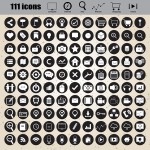THE IMPACT OF DIGITAL HEALTH ON THE PHARMACEUTICAL INDUSTRY

By THILO KALTENBACH
Results from a recent study conducted by Arthur D. Little and Karlsruhe Institute of Technology indicate that by 2020, the business model of the pharmaceutical industry will be transformed by digital health.
The changing market environment will come with promising opportunities for established pharmaceutical companies to participate in a highly attractive and innovative segment.
Three elements are prerequisites for a successful engagement in the digital health space:
- The definition of a digital vision and a comprehensive digital strategy
- Offering real value to the patient: solutions have to target unmet needs and improve the human condition
- A tailored approach to innovation
Principles of Winning solutions
A winning digital solution reflects the whole customer journey and targets specific interactions in the healthcare system. By connecting the stakeholders – patient, physician, payer, healthcare provider and supplier – the solution facilitates easier communication and transactions between the parties involved.
There are eight principles to assess whether digital offerings have what it takes to create winning solutions:
Value-add:
The offering addresses the patient’s needs and creates additional value for him or her as a customer. A smart solution improves the quality and outcome of a treatment by simplifying processes and saving time and money. Thus, it is a powerful tool to overcome the gap between healthcare provider and patient interests, which allows building and fostering of customer loyalty. The starting point should be the actual disease – how it impacts the patient’s life and the recommended treatment pattern. Digital solutions should support the patient in tracking his health status and sharing data with all involved physicians, renewing his prescription and predicting likely changes in health status based on available data.
Platform/connectivity:
A good solution uses a multi-channel approach to properly satisfy each patient’s demand. Social media, web sites and apps offer touch points to the customer, and are embedded in the internal organization and value chain. Connectivity links the patient’s devices, transports data and allows a view of the patient in real time. A strong platform that can integrate other applications is of integral value.

Data:
Digital solutions collect and take advantage of comprehensive user data. Electronic health records offer the possibility of tracking and sharing the patient’s health status and customizing the treatment. Any offering that does not leverage the patient’s data to track and record what is going on over time cannot leverage the full potential. The data is already there today – why not use it and make it accessible to the involved parties to benefit the patient?
Intelligence:
Superior offerings are going way beyond data collection. Intelligent systems make use of individual and patient group data to identify and track changes to their health status in real time. By considering external factors, treatments and solutions become predictive instead of reactive. Only when an underlying understanding of interrelated variables exists can the app itself embed the algorithm.
Device:
Winning digital health solutions require a device that collects and analyzes the data, communicates with the patient and provides multiple interfaces to other medical devices and communication platforms. It links to the most recent technology standards, and thus allows building of closed-loop systems. The device must be able to become a lifestyle product for the patient.
Sensor:
Sensors enable tracking of a patient’s health status in real time, and yield precise and continuous measurements. They mitigate the gap between home care and professional equipment. Furthermore, sensors are designed to be convenient for the patient: wearable, inconspicuous and suitable for daily use. One reason patients are non-compliant is that they are too often asked to use a separate and inconvenient device.

Pharmaceutical:
Digital offerings can potentially enhance the value proposition of a pharmaceutical and the related therapy. Technological dimensions can add to the core product and enable a tailored treatment. RFID chips on pharmaceutical boxes, sensors on inhalers, pumps, smart pills, cloud-based patient records, video platforms, patches and implants to track the status – for example – of the cardiovascular system or glucose concentration, learning programs, and many more options are available to enrich the value proposition.
Regional:
Finally, winning digital solutions cannot be developed as one-size-fits-all solutions. In fact, the most successful offering will reflect the regulatory and care environment in each respective region. Not only will it understand, but also accept local pain points and accordingly adjust its value proposition.
The approach to innovation of the traditional pharmaceutical industry and other established players in the healthcare industry and that of the digital age are vastly different. A change in the approach to innovation and resulting processes and organizational structures appears inevitable.
To tap into the full potential this evolving market offers and avoid the threats outlined above, successful and compelling digital health strategies are needed.
